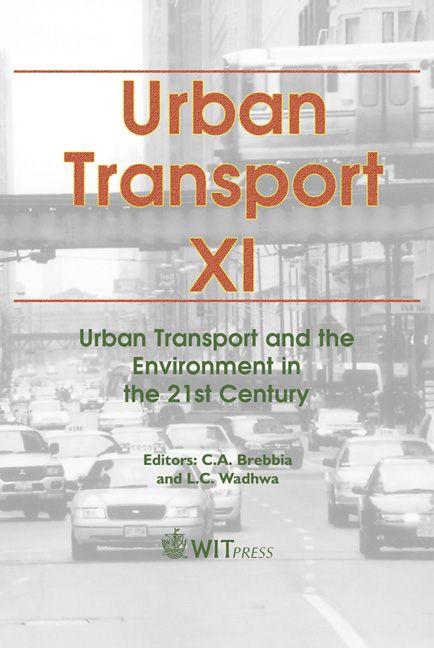The SkyWeb Express Personal Rapid Transit System
Price
Free (open access)
Transaction
Volume
77
Pages
9
Published
2005
Size
1,168 kb
Paper DOI
10.2495/UT050121
Copyright
WIT Press
Author(s)
J. E. Anderson
Abstract
Numerous investigators, observing that conventional transit systems are no match for the automobile on a modern road, have sought a means for movement of people that would attract many more riders while reducing costs. Understanding the benefits of automation, this activity led to the consideration of systems consisting of very small, automatically controlled vehicles running on a network of small, low-cost elevated guideways. To obtain adequate capacity and to decrease trip time, the stations would be placed off-line. In this way the system would have the attractiveness of a freeway, which permits private travel at minimum trip time, but would require a great deal less space. In the late 1960s this concept became called Personal Rapid Transit (PRT) and governments began investing in it. Unfortunately, there are a great many ways to design a PRT system and at that early stage there was no serious theoretical work to determine how best to accomplish such a design. As a Professor of Mechanical Engineering at the University of Minnesota, the author became interested in this problem in 1968 and during the 1970s was able to study all of the PRT work underway around the world, and thereby develop a comprehensive set of criteria to guide him to an optimized version of PRT. That version is now called SkyWeb Express. The paper briefly discusses the advantages of use of off-line stations and the design of the necessary guideway, vehicle, station, operations, and control system. Means for obtaining the necessary safety and reliability are then discussed, followed by a brief discussion of system costs and cost effectiveness. Finally, a list is given of benefits for the community and the patrons. Keywords: personal rapid transit, automated guideway transit, automated people movers, automated highways, optimization, cost-effective design, automatic control, urban transportation, people movement, system design.
Keywords
personal rapid transit, automated guideway transit, automated people movers, automated highways, optimization, cost-effective design, automatic control, urban transportation, people movement, system design.





